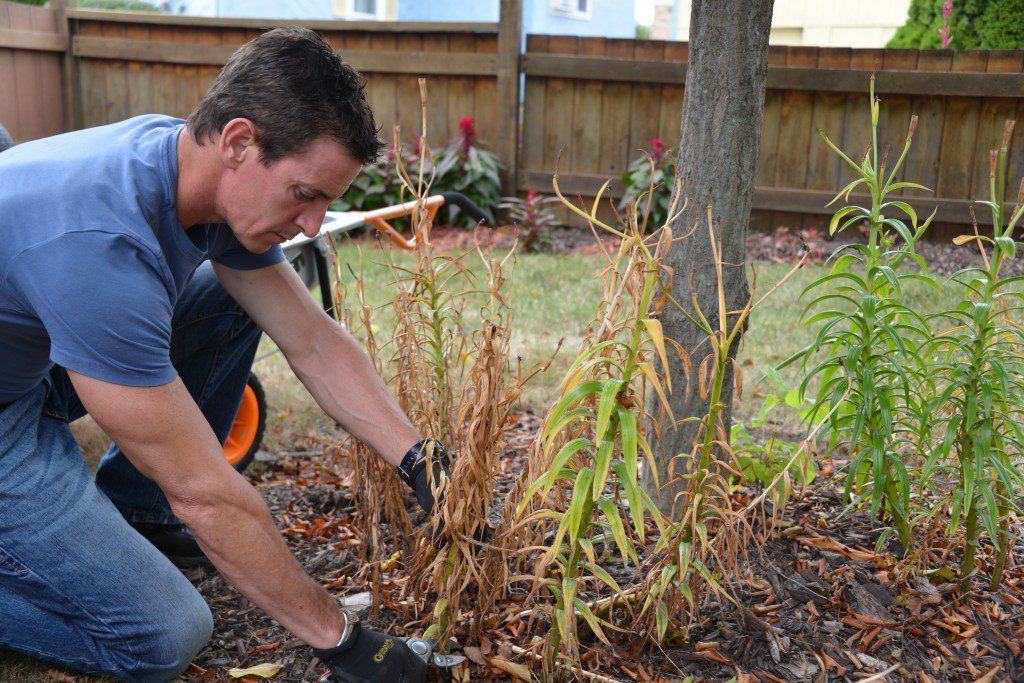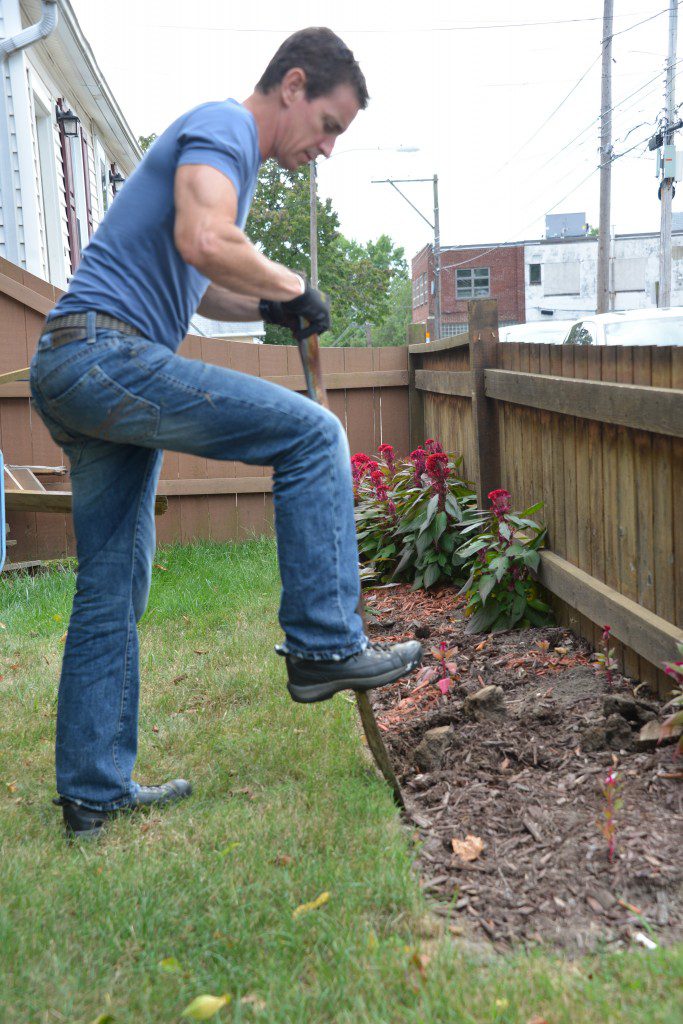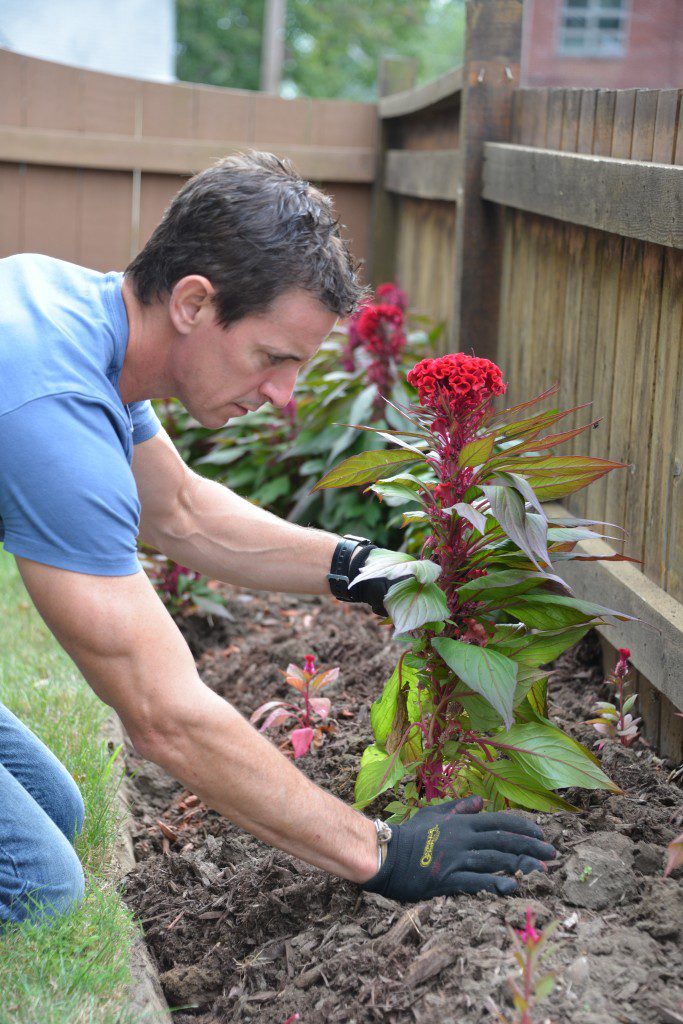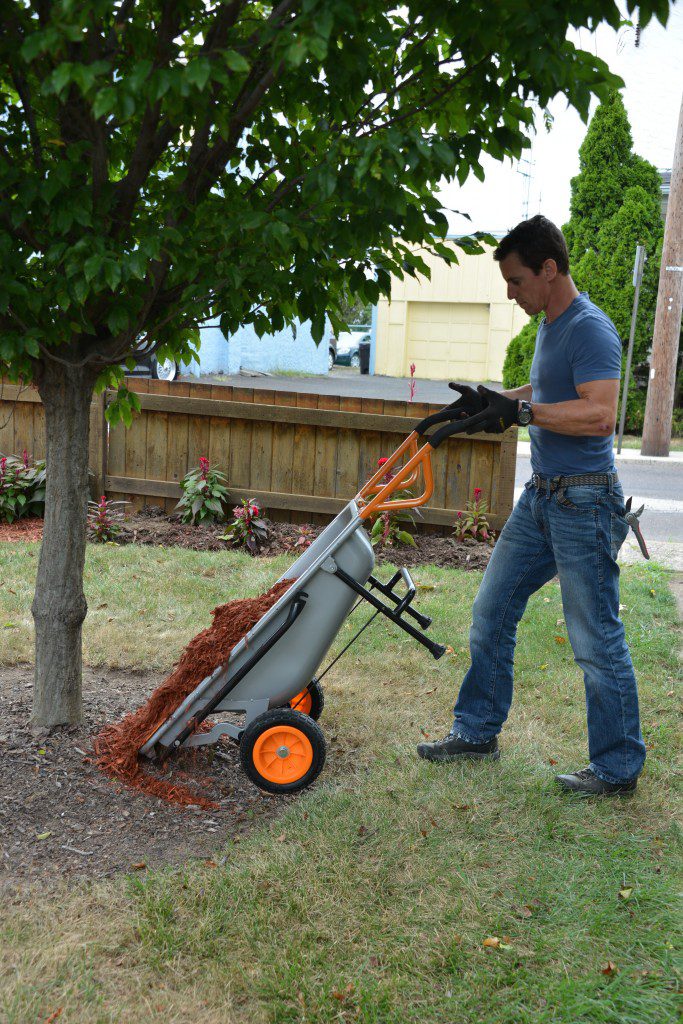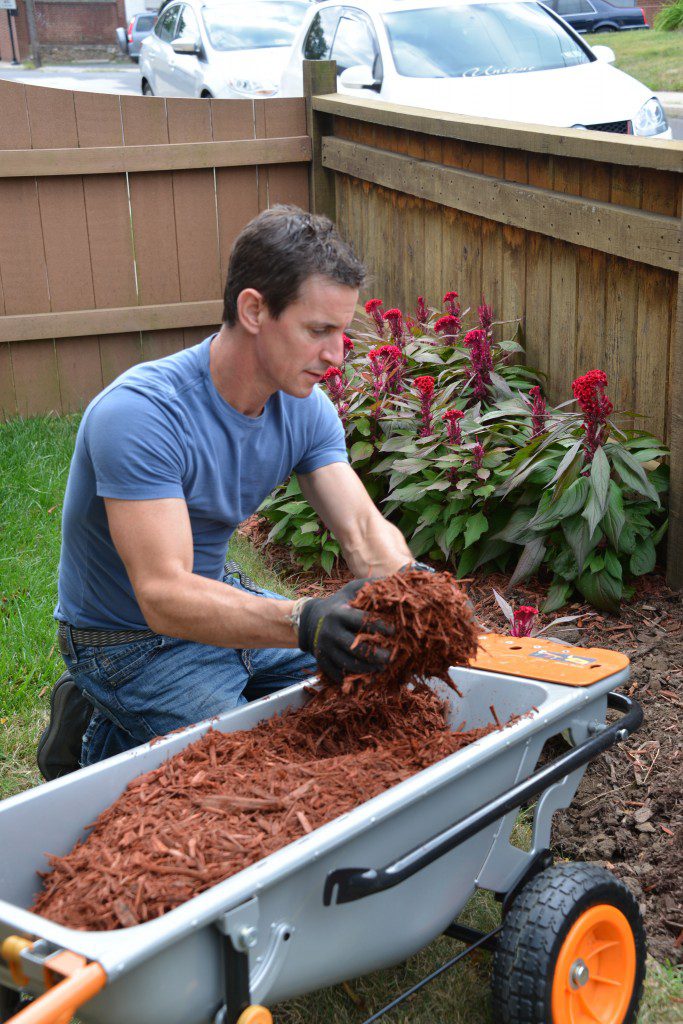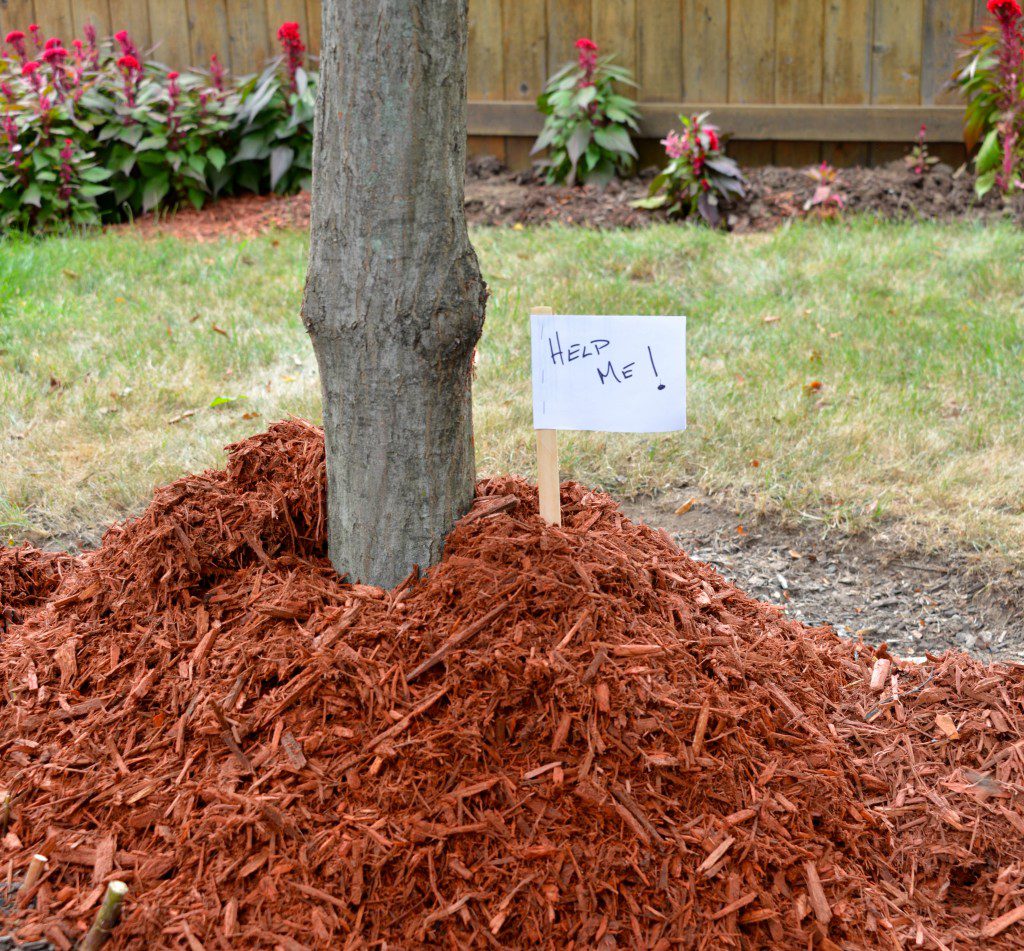I’ve heard chatter in the gardening world that bark mulch is bad. Especially dyed bark mulch. I’m not sure I agree.
The reasons why people, ‘experts’ I guess, say dyed bark mulch is bad range from the complex—citing lots of esoteric science—to the panicked: As in, dyed mulch is made from recycled wood: Some of that wood may be old decks and fence posts made from pressure treated lumber. I read several posts about bark mulch that say having pressure treated lumber near plants is nearly akin to soaking your roses in flames.
Calm down.
While this post is hardly a scientific study, it is a report on my experience and a little how-to. First the how-to.
How-To: Putting down bark mulch is not exactly Elon Musk rocket science, but doing it well makes for happy gardens in my experience. Here’s how I do a Fall (or Spring) mulch:
- Dead head plants past their blooms and green goodness.
- Cut it in a new edge as needed with a square-edged spade. I like an edge about 3-inches deep. This cuts creeping roots and rhizomes from the lawn and acts as a gutter to hold much in the bed.
- Move plants I want to move.
- Spread the mulch 2-3 inches thick around my garden beds. For beds with large areas of mulch I plop a pile down from the wheelbarrow and rake it. For more tightly planted areas, I pull from the wheelbarrow and spread by hand. If the mulch is dyed, I wear work gloves.
- Around trees, I leave the root flare exposed. Mulch piled up the trunk of the tree doesn’t look good (to me) and the tree doesn’t love it.
Mulch or No Mulch: Here’s my experience.
- I’ve gone several seasons using either leaf mulch, compost, or no mulch at all. The result in all cases was an absolute disaster. The infestation of weeds it took me several more seasons to pull out and control could be called ‘epic’.
- Leaf mulch (cheap-o stuff from my town, my fault) imported the seeds.
- I consider compost to be a soil amendment, not a mulch, which I add to new plantings. Reason is, my compost anyway, is full of 50-billion weed seeds I don’t want to germinate around my lilies. Compost that you buy may be different. But of your plants grow in it, then weeds to too. Just sayin’.
- Using shredded hardwood bark mulch has delivered the best blend of weed control—if you haven’t guessed yet, weeds tangling up the flowers kinda competes with flower growth—and healthy plants.
- I’ve had zero noticeable problems with dyed mulch and am glad it is a recycled product. And yes, the product I used here, Timberline Mulch, seems to have some PT in it.
- As far as having pressure treated lumber shreds mixed into the mulch, I see that as little different that having a pressure-treated lumber raised bed, or having a bed near a fence. And, PT isn’t really treated all the way through. Cut a board in half. You’ll see.
- And as far as the treatment leeching out into the garden, there were never any problems before with PT.
- That said, I’m talking about flowers. When it comes to food, I’d go with a cedar mulch with nothing in it. Or hay. The only time I’d use nothing is if I had nothing to do but weed.
